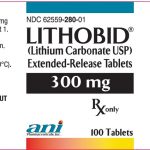Loxapine (Loxitane): Uses, Class, Dosage, Side Effects, Reviews

What Is Loxapine (Loxitane) And What Does It Treat?
Loxapine (Loxitane) is a prescription medication that works in the brain to treat schizophrenia. It is also known as a first-generation antipsychotic (FGA) or typical antipsychotic. Loxapine (Loxitane) rebalances dopamine to improve thinking, mood, and behavior.
Loxapine powder for inhalation (Adasuve®) is FDA approved for the treatment of acute agitation associated with schizophrenia or bipolar disorder in adults.
Loxapine (Loxitane) may also be helpful when prescribed “off-label” for other mental health conditions. “Off-label” means that it has not been approved by the Food and Drug Administration for this condition. Your mental health provider should justify his or her thinking in recommending an “off-label” treatment. They should be clear about the limits of the research around that medication and if there are any other options.
What Is The Most Important Information I Should Know About Loxapine (Loxitane)?
Schizophrenia requires long-term treatment. Do not stop taking Loxapine (Loxitane), even when you feel better.
With input from you, your health care provider will assess how long you will need to take the medicine.
Missing doses of Loxapine (Loxitane) may increase your risk for a relapse in your symptoms.
Do not stop taking Loxapine (Loxitane) or change your dose without talking to your healthcare provider first.
For Loxapine (Loxitane) to work properly, it should be taken every day as ordered by your healthcare provider.
What Should I Discuss With My Healthcare Provider Before Taking Loxapine (Loxitane)?
• Symptoms of your condition that bother you the most
• If you have thoughts of suicide or harming yourself
• Medications you have taken in the past for your condition, whether they were effective or caused any adverse effects
• If you ever had muscle stiffness, shaking, tardive dyskinesia, neuroleptic malignant syndrome, or weight gain caused by a medication
• If you experience side effects from your medications, discuss them with your provider. Some side effects may pass with time, but others may require changes in the medication.
• Any psychiatric or medical problems you have, such as heart rhythm problems, long QT syndrome, heart attacks, diabetes, high cholesterol, or seizures
• If you have a family history of diabetes or heart disease
• All other medications you are currently taking (including over the counter products, herbal and nutritional supplements) and any medication allergies you have
• Other non-medication treatments you are receiving, such as talk therapy or substance abuse treatment. Your provider can explain how these different treatments work with the medication.
• If you are pregnant, plan to become pregnant, or are breast-feeding
• If you smoke, drink alcohol, or use illegal drugs
How Should I Take Loxapine (Loxitane)?
Loxapine (Loxitane) is usually taken twice a day.
Typically, patients begin at a low dose of medicine and the dose is increased slowly over several weeks.
The dose usually ranges from 10mg to 250mg daily. Only your healthcare provider can determine the correct dose for you.
Use a calendar, pillbox, alarm clock, or cell phone alert to help you remember to take your medication. You may also ask a family member or a friend to remind you or check in with you to be sure you are taking your medication.
The inhalation form is used once daily.
What Happens If I Miss A Dose Of Loxapine (Loxitane)?
If you miss a dose of Loxapine (Loxitane), take it as soon as you remember, unless it is closer to the time of your next dose. Discuss this with your healthcare provider. Do not double your next dose or take more than what is prescribed.
What Should I Avoid While Taking Loxapine (Loxitane)?
Avoid drinking alcohol or using illegal drugs while you are taking Loxapine (Loxitane). They may decrease the benefits (e.g. worsen your confusion) and increase adverse effects (e.g. sedation) of the medication.
What Happens If I Overdose With Loxapine (Loxitane)?
If an overdose occurs, call your doctor or 911. You may need urgent medical care. You may also contact the poison control center at 1-800-222-1222. A specific treatment to reverse the effects of Loxapine (Loxitane) does not exist.
How Long Does It Take For Loxapine (Loxitane) To Work?
It is very important to tell your doctor how you feel things are going during the first few weeks after you start taking Loxapine (Loxitane). It will probably take several weeks to see big enough changes in your symptoms to decide if Loxapine (Loxitane) is the right medication for you.
Antipsychotic treatment is generally needed lifelong for persons with schizophrenia. Your doctor can best discuss the duration of treatment you need based on your symptoms and illness.
• Hallucinations, disorganized thinking, and delusions may improve in the first 1-2 weeks
• Sometimes these symptoms do not completely go away
• Motivation and desire to be around other people can take at least 1-2 weeks to improve
• Symptoms continue to get better the longer you take Loxapine (Loxitane).
• It may take 2-3 months before you get the full benefit of Loxapine (Loxitane).
Can a pregnant woman take Loxapine (Loxitane)?
If you are planning on becoming pregnant, notify your healthcare provider to best manage your medications. People living with schizophrenia who wish to become pregnant face important decisions. This is a complex decision since untreated schizophrenia has risks to the fetus, as well as the mother. It is important to discuss the risks and benefits of treatment with your doctor and caregivers.
Antipsychotic use during the third trimester of pregnancy has a risk for abnormal muscle movements (extrapyramidal symptoms [EPS]) and/or withdrawal symptoms in newborns following delivery. Symptoms in the newborn may include agitation, feeding disorder, hypertonia, hypotonia, respiratory distress, somnolence, and tremor; these effects may be self-limiting or require hospitalization.
Can a breastfeeding woman take Loxapine (Loxitane)?
Caution is advised with breastfeeding while taking Loxapine (Loxitane). Loxapine has been found to be passed into the milk of animals, but it is unknown if loxapine enters the breast milk of humans. There are no published studies looking at the possible risks of taking loxapine while breastfeeding.
What Are The Possible Side Effects Of Loxapine (Loxitane)?
Common side effects
Oral: Low blood pressure, fainting, sleepiness
Powder for inhalation: Distortion in sense of taste, respiratory distress
Rare side effects
Loxapine (Loxitane) may increase the blood levels of a hormone called prolactin. Side effects of increased prolactin levels include females losing their period, production of breast milk, and males losing their sex drive or possibly experiencing erectile problems. Long-term (months or years) of elevated prolactin can lead to osteoporosis or increased risk of bone fractures.
Serious side effects
Some people may develop muscle-related side effects while taking Loxapine (Loxitane). The technical terms for these are “extrapyramidal symptoms” (EPS) and “tardive dyskinesia” (TD). Symptoms of EPS include restlessness, tremor, and stiffness. TD symptoms include slow or jerky movements that one cannot control, often starting in the mouth with tongue rolling or chewing movements.
All antipsychotics have been associated with the risk of sudden cardiac death due to an arrhythmia (irregular heartbeat). To minimize this risk, antipsychotic medications should be used in the smallest effective dose when the benefits outweigh the risks. Your doctor may order an EKG to monitor for an irregular heartbeat.
Neuroleptic malignant syndrome is a rare, life-threatening adverse effect of antipsychotics that occurs in <1% of patients. Symptoms include confusion, fever, extreme muscle stiffness, and sweating. If any of these symptoms occur, contact your healthcare provider immediately.
All antipsychotics can cause sedation, dizziness, or orthostatic hypotension (a drop in blood pressure when standing up from sitting or lying down). These side effects may lead to falls which could cause bone fractures or other injuries. This risk is higher for people with conditions or other medications that could worsen these effects. If falls or any of these symptoms occur, contact your healthcare provider.
Are There Any Risks For Taking Loxapine (Loxitane) For Long Periods Of Time?
Tardive dyskinesia (TD) is a side effect that develops with prolonged use of antipsychotics. If you develop symptoms of TD, such as grimacing, sucking, smacking of lips, or other movements that you cannot control, contact your healthcare provider immediately. All patients taking either first or second-generation antipsychotics should have an Abnormal Involuntary Movement Scale (AIMS) completed regularly by their healthcare provider to monitor for TD.
What Other Medications May Interact With Loxapine (Loxitane)?
Other medications taken into the lungs may interfere with the effectiveness of the Adasuve aerosol formulation of Loxapine (Loxitane). You should check with your doctor if you also use any type of inhaler for asthma or COPD.





